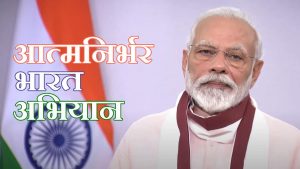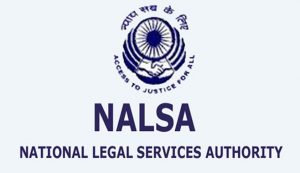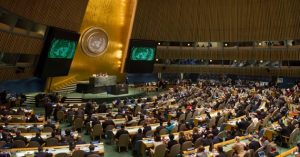Table of Contents
Daily Current Affairs for Government Exams:
Today Current Affairs:18th May 2020 for UPSC IAS exams, State PSC exams, SSC CGL, State SSC, RRB, Railways, Banking Exam & IBPS, etc.
Contents:’
- Atmanirbhar Bharat Abhiyan: Economic Stimulus-IV
- Atmanirbhar Bharat Abhiyan: Economic Stimulus-V
- National Legal Services Authority (NALSA}:
- 74th World Health Assembly to be convened by the WHO:
- Regional Comprehensive Economic Partnership (RCEP).:
- D614G:
- Troglomyces twitter.:
- Other important current affairs
1.Atmanirbhar Bharat Abhiyan: Economic Stimulus-IV:

Recently, the Union Finance Minister announced the fourth tranche of Atmanirbhar Bharat Abhiyan targeted towards fast track investments in the eight sectors.
- The fourth tranche focuses on eight sectors namely, coal, minerals, defense production, civil aviation, power distribution, social infrastructure, space and atomic energy.
Coal Sector:
- Commercial Mining:
- The introduction of commercial mining will remove the government monopoly in coal mining. India has the third-largest coal availability within its untapped mines and yet India still imports coal.
- Commercial mining will be introduced on the basis of a revenue-sharing mechanism.
- The government will receive a share of the gross revenue from the sale of coal but will not be involved with the cost incurred.
- Coal Gasification/Liquefaction:
- It will be incentivised through rebate (partial refund) in revenue share to lower the environmental impact.
- It is also expected to assist India in switching to a gas-based economy.
- Infrastructure Investment:
- The infrastructure development worth Rs. 50,000 crores will be done to achieve the Coal India Limited’s (CIL) target of 1 billion tons of coal production by 2023-24 plus coal production from private blocks.
Mineral Sector:
- Exploration-cum-Mining-cum-Production Regime:
- 500 mining blocks would be offered through an open and transparent auction process under this composite regime.
- Joint Auction of Bauxite and Coal Mineral Blocks:
- It aims to enhance the aluminium industry’s competitiveness by reducing the cost of electricity generation.
- Captive and Non-captive Mines:
- The government has decided to remove the distinction between captive and non-captive mines to allow the transfer of mining leases and the sale of surplus unused minerals, leading to better efficiency in mining and production.
- The captive mines are that produce minerals for use by the same company.
Defence Sector:
- Revision of FDI Limit:
- The FDI limit in defence manufacturing under automatic route will be raised from 49% to 74%.
- Project Management Unit:
- The government is expected to begin time-bound defence procurement and faster decision making by setting up a Project Management Unit (PMU) to support contract management.
- Reduction in Defence Import Bill:
- The government will notify a list of weapons/platforms banned for imports and thus such items can only be purchased from India.
Civil Aviation:
- Efficient Airspace Management:
- The restrictions on the utilisation of Indian airspace will be eased so that the flying of civilian aircraft becomes more efficient.
- Airports Development through PPP :
- In addition to the existing ones, six more airports will be auctioned under the Public-Private-Partnership (PPP) model for its development.
- India- a global hub for Aircraft Maintenance, Repair and Overhaul (MRO):
- The aircraft component repairs and airframe maintenance is intended to increase from Rs 800 crore to Rs 2,000 crore in three years.
- The convergence between the Defence sector and the civil MROs will be established to bring down the maintenance cost of airlines.
Power Distribution Sector:
- Tariff Policy Reforms:
- The tariff policy reforms will be announced in the future. The reforms are expected to focus on the consumer rights, promotion of industry and sustainability of the sector.
- Privatization of Distribution in UTs :
- The power departments/utilities in Union Territories will be privatised.
- It is expected to improve the operational and financial efficiency in Distribution.
- Social Infrastructure Projects:
- Investments through Viability Gap Funding:
- The government is expected to invest Rs 8,100 crores through Viability Gap Funding (VGF).
Space Sector:
- Participation of the Private Sector:
- The government will be providing a level playing field for private companies in satellites, planetary exploration, outer space travel, launches and space-based services.
- Such private players will also be allowed to use ISRO’s facilities and other relevant assets to improve their capabilities.
- Atomic Energy:
- Research Reactor in PPP Mode:
- It will help to produce medical isotopes for affordable treatment of cancer and other diseases.
- It will also generate facilities to use irradiation technology for food preservation. This will complement agricultural reforms and assist farmers.
- Research Reactor in PPP Mode:
2.Atmanirbhar Bharat Abhiyan: Economic Stimulus-V:

Recently, the Union Finance Minister announced the measures for providing employment and support to businesses, state governments as well sectors such as education and health as part of the fifth and final tranche of Atmanirbhar Bharat Abhiyan.
Increase in Allocation for MGNREGA
- The Government will allocate an additional Rs.40,000 crore under Mahatma Gandhi National Rural Employment Guarantee Act, 2005 (MGNREGA).
- It will help generate nearly 300 crore person-days in total, addressing the need for more work by the migrants who are returning to their hometowns due to the pandemic and lockdown.
Health Reforms and Initiatives
- Public expenditure on health will be increased by investing in grass-root health institutions and ramping up health and wellness centres in rural and urban areas.
- Preparing India for future pandemics
- Setting up of Infectious Diseases Hospital Blocks in all districts.
- Strengthening of lab networks and surveillance (Integrated Public Health Labs in all districts and blocks)
- The National Institutional Platform for One Health by Indian Council of Medical Research (ICMR) will encourage research.
- Implementation of National Digital Health Blueprint under the National Digital Health Mission (NDHM).
- NDHM was recommended to be established as a pure government organization with complete functional autonomy on the lines of Unique Identification Authority of India (UIDAI) and Goods and Services Network GSTN.
Technology Driven Education with Equity
- The government will launch PM eVIDYA, a programme for multi-mode access to digital/online education with immediate effect. It consists of:
- DIKSHA for school education in States/UTs: e-content and QR coded Energized Textbooks for all grades (one nation, one digital platform)
- One earmarked TV channel per class from 1 to 12 (One class, One channel)
Extensive use of Radio, Community radio and Podcasts. - Special e-content for visually and hearing impaired.Top 100 universities will be permitted to automatically start online courses by 30th May, 2020.
- Manodarpan, an initiative for psycho-social support for students, teachers and families for mental health and emotional well-being will be launched.
- New National Curriculum and Pedagogical framework for school, early childhood and teachers will be launched.
- National Foundational Literacy and Numeracy Mission for ensuring that every child attains learning levels and outcomes in grade 5 by 2025 will be launched by December 2020.
Measures Related to IBC
- The minimum threshold to initiate insolvency proceedings has been raised to Rs.1 crore (from Rs.1 lakh, which largely insulates Micro, Small and Medium Enterprises-MSMEs).
- Special insolvency resolution framework for MSMEs under Section 240A of the Insolvency and Bankruptcy Code (IBC) will be notified.
- Suspension of fresh initiation of insolvency proceedings up to one year, depending upon the pandemic.
Empowering the Central Government to exclude Covid-19 related debt from the definition of “default” under the IBC for the purpose of triggering insolvency proceedings.
Measures Related to the Companies Act
- Decriminalisation of Companies Act, 2013 violations involving minor technical and procedural defaults (shortcomings in Corporate Social Responsibility (CSR) reporting, inadequacies in Board report, filing defaults, etc).
- Majority of the compoundable offences sections to be shifted to Internal Adjudication Mechanism (IAM).
The amendments will de-clog the criminal courts and National Company Law Tribunal (NCLT).
Ease of Doing Business for Corporates
- Direct listing of securities by Indian public companies in permissible foreign jurisdictions.
- Private companies which list Non-Convertible Debentures (NCDs) on stock exchanges not to be regarded as listed companies.
Public Sector Enterprise Policy for a New, Self-reliant India
Support to State Governments
- The Centre has decided to increase borrowing limits of States from 3% to 5% for 2020-21 only which will give States extra resources of Rs.4.28 lakh crore.
- Part of the borrowing will be linked to specific reforms (including recommendations of the Finance Commission).
- Reform linkage will be in four areas:
- Universalisation of ‘One Nation One Ration card’.
- Ease of Doing Business.
- Power distribution.
- Urban Local Body revenues.
3.National Legal Services Authority (NALSA}:

NALSA has released a report on a number of undertrials released during the lockdown period.
- Legal services institutions have intervened to release 42,529 undertrial prisoners as well as 16,391 convicts on parole to de-congest prisons during the COVID-19 pandemic.
- The highest number of undertrial prisoners released was 9,977 in Uttar Pradesh, followed by 5,460 in Rajasthan and 4,547 in Tamil Nadu, 3,698 in Punjab and 3,400 in Maharashtra.
- There are 1,339 prisons with approximately 4,66,084 inmates. The rate of occupancy at Indian prisons at 117.6%.
- The Supreme Court observed in March that physical distancing, an effective measure to check the spread of the novel coronavirus, would be difficult in prisons.
- Further, the court issued guidelines, formed committees and asked the legal services authorities to work together and release undertrial prisoners and those on bail and parole to bring the prison population down.
About NALSA:
- NALSA has been constituted under the Legal Services Authorities Act, 1987, to provide free legal services to weaker sections of society.
- The aim is to ensure that opportunities for securing justice are not denied to any citizen by reasons of economic or other disabilities.
- Important functions performed by NALSA:
- Organise Lok Adalats for amicable settlement of disputes.
- Identify specific categories of the marginalised and excluded groups and formulates various schemes for the implementation of preventive and strategic legal service programmes.
- Provide free legal aid in civil and criminal matters for the poor and marginalised people who cannot afford the services of a lawyer in any court or tribunal.
- In every State, State Legal Services Authority has been constituted to give effect to the policies and directions of the NALSA and to give free legal services to the people and conduct Lok Adalats in the State.
- The State Legal Services Authority is headed by Hon’ble the Chief Justice of the respective High Court who is the Patron-in-Chief of the State Legal Services Authority.
- In every District, District Legal Services Authority has been constituted to implement Legal Services Programmes in the District.
- The District Legal Services Authority is situated in the District Courts Complex in every District and chaired by the District Judge of the respective district.
4. 74th World Health Assembly to be convened by the WHO:

Fifty-eight countries, including 27 members of the European Union and India have moved a draft resolution demanding evaluation of the World Health Organization (WHO)’s a response towards novel coronavirus (COVID-19) pandemic.
- The resolution will be tabled in the 74th World Health Assembly to be convened by the WHO.
- Tough action against and transparency on the response to the coronavirus outbreak by China.
- Address questions raised about the World Health Organization (WHO) as an organisation and its response to the pandemic.
- An “impartial”, “independent” and “comprehensive” evaluation to review lessons learnt from the WHO-coordinated response.
- The “effectiveness” of mechanisms at WHO’s disposal — namely the 2005 International Health Regulations.
- The International Health Regulations, or IHR (2005), represent an agreement between 196 countries including all WHO the Member States to work together for global health security.
- Through IHR, countries have agreed to build their capacities to detect, assess and report public health events.
- WHO plays the coordinating role in IHR and, together with its partners, helps countries to build capacities.
- IHR also includes specific measures at ports, airports and ground crossings to limit the spread of health risks to neighbouring countries and to prevent unwarranted travel and trade restrictions so that traffic and trade disruption is kept to a minimum.
5. Regional Comprehensive Economic Partnership (RCEP).:

May 15 was the deadline for a response to a fresh proposal of India rejoining negotiations on the ASEAN-led trade Regional Comprehensive Economic Partnership (RCEP).
- India’s trade deficit with the RCEP nations is $105 billion, of which China alone accounts for $54 billion.
- Further relaxations would enhance the deficit.
- The worry is also over Chinese manufactured goods and dairy products from New Zealand flooding Indian markets, hurting domestic interests.
- The trade agreement was also seen as being detrimental to the government’s Make in India initiative.
- India was looking for specific rules of origin to ensure the trade pact wasn’t abused by non-partner countries and an auto-trigger mechanism to protect it from a surge in imports.
- Ecommerce and trade remedies were among other key areas of concern that failed to find satisfactory redressal.
- India has expressed its concerns over lowering and elimination of tariffs on products from other countries, as it would negatively affect the domestic agricultural and industrial sector.
- India was also worried about keeping 2014 as the base year for tariff reductions.
- If anything the COVID-19 experience and the experience of countries that have been overly dependent on imports from China or one country would have reinforced and revalidated the decision to stay out of RCEP.
RCEP:
- The Regional Comprehensive Economic Partnership is a free trade agreement originally devised to consist of 16 countries across the Asia-Pacific region.
- The pact looks to drop tariffs and duties between the members so that goods and services can flow freely between them.
6.D614G:

Coronavirus is mutating. And, one particular strain of mutation called D614G in the Spike protein region of the SARS-CoV-2 virus is worrying experts.
- As of May 2020, scientists across the world have identified over 200 genetic mutations in the SARS-CoV-2 that causes COVID-19. Mutations are essentially small genetic changes.
- Viruses mutate naturally, and mutations generally do not translate into a more dangerous or virulent form of the existing virus.
- A new study focussing on mutations in the “Spike” protein that gives the virus its distinctive “crown-like” shape, has identified 14 mutations in the Spike.
- The research was done using a database called the Global Initiative on Sharing All Influenza Data (GISAID).
- According to the researchers, one particular mutation identified as D614G is of “urgent concern”.
- It began spreading in Europe in early February, and when introduced to new regions it rapidly becomes the dominant form.
8.Troglomyces twitter.:

A new species has just been discovered using a Twitter image and thus has been named as Troglomyces twitteri.
- Troglomyces twitteri is a type of parasitic fungus.
- It belongs to an order called Laboulbeniales tiny fungal parasites that attack insects and millipedes.
- These fungi live on the outside of host organisms; in this case, on the reproductive organs of millipedes.
- Laboulbeniales were first discovered in the middle of the 19th century.
Other important current affairs:
1. The Ministry of Corporate Affairs (MCA) has announced that listed companies that come out with rights issues before July 31 would not be required to notify shareholders about the issue through postal services because of transport restrictions due to the Covid-19 outbreak.
- A rights issue is an offering of shares made to existing shareholders in proportion to their existing shareholding.
- Companies often offer shares in a rights issue at a discount on the market price.
- Rights issues are used by companies seeking to raise capital without increasing debt.
- Shareholders are not obliged to purchase shares offered in a rights issue. However, not participating in a rights issue may dilute their overall stake in the company, as there would be a larger number of outstanding shares of the company post the issue.
- The recent clarification by MCA was issued under Section 62(2) of Companies Act, 2013.
2. Recently, Afghanistan’s President Ashraf Ghani and his political rival Abdullah Abdullah have signed a power-sharing agreement.
- According to the deal, Mr Ghani will remain as president while both Mr Ghani and Mr Abdullah will choose an equal number of ministers in the cabinet.
- The deal calls for Abdullah to lead the country’s National Reconciliation High Council.
- The Reconciliation Council has been given the authority to handle and approve all affairs related to Afghanistan’s peace process including the peace talks with the Taliban.
3.Recently, India joined 61 countries that have moved a proposal at the World Health Assembly to identify the zoonotic source of the coronavirus.
- The World Health Assembly is the decision making body of the World Health Organisation (WHO).
- Zoonotic refers to diseases that can be passed from animals to humans.
- The Proposal:
- It is a part of a seven-page draft resolution moved by 35 countries and the 27-member European Union.
- It asks the WHO chief to work with the World Organisation for Animal Health to conduct scientific and collaborative field missions and the route of introduction to the human population (novel coronavirus), including the possible role of intermediate hosts.
- The countries also demanded an “impartial, independent and comprehensive evaluation” of the World Health Organization’s (WHO) response to Covid-19.
- Earlier, the WHO was slammed for accepting the findings given by China on face-value.
- The US has even suspended funding to the body.
4.The National Crisis Management Committee reviewed the preparedness for the impending cyclone Amphan.
- Cyclone Amphan (pronounced as UM-PUN) is a tropical cyclone formed over the Bay of Bengal that has intensified and likely to turn into a “super cyclonic storm (maximum wind speed is 120 knots)”.
- According to the India Meteorological Department forecast, it will make landfall as a very severe cyclone between the Sagar islands of West Bengal and the Hatiya islands of Bangladesh.
- It has been named by Thailand.
- Affected Regions: West Bengal, Odisha and Bangladesh.
- Amphan is the second pre-monsoon cyclone to form in the Bay of Bengal in two years.
- The first one was the Cyclone Fani.
- The pre-monsoon period is generally considered to be unsupportive for the formation of tropical cyclones.
5. The National Disaster Management Authority (NDMA) has developed an online dashboard called ‘National Migrant Information System (NMIS)’.
- The online portal (NMIS) would maintain a central repository of migrant workers and help in speedy inter-state communication to facilitate the smooth movement of migrant workers to their native places.
- The key data pertaining to the persons migrating has been standardized for uploading such as name, age, mobile no., originating and destination district, date of travel etc.
- States will be able to visualize how many people are going out from where and how many are reaching their destination States.
- It has additional advantages like contact tracing, which may be useful in overall Covid-19 response work.
- The mobile numbers of people can be used for contact tracing and movement monitoring during Covid-19.
- Contact tracing is the process of identification of persons who may have come into contact with an infected person and subsequent collection of further information about these contacts.
- The Government of India has allowed the movement of migrant workers by buses and ‘Shramik’ special trains to enable them to travel to their native places.
6. World Telecommunication and Information Society Day 2020 was observed on 17 May with the theme “Connect 2030: ICTs for the Sustainable Development Goals (SDGs).”
- It has been celebrated annually on 17 May since 1969, marking the founding of the International Telecommunication Union (ITU) and the signing of the first International Telegraph Convention in 1865.
- International Telecommunication Union (ITU): is an agency of the United Nations (UN) whose purpose is to coordinate telecommunication operations and services throughout the world.
- Originally founded in 1865, as the International Telegraph Union, the ITU is the oldest existing international organization.
- Headquarters are in Geneva, Switzerland.
7. The 75th anniversary of the end of the ‘World War II in Europe’ was celebrated by the United States, Europe and Russia.
- Victory in Europe Day (abbreviated to VE Day) is the day celebrating the formal acceptance by the Allies of World War II of Nazi Germany’s unconditional surrender of its armed forces on 8 May 1945, marking the end of World War II in Europe.
- Several countries observe public holidays on the day each year, variously called Victory Over Fascism Day, Liberation Day or simply Victory Day.
- Several former Soviet bloc countries like Russia, Belarus, and Serbia celebrate on 9 May as the end of all combat actions was specified at 23:01 Central European Time, which was already 9 May in the USSR.
8. On the Statehood Day of Sikkim (16th May), the Prime Minister greeted the people of the state and praised the traditions and culture of the state highlighting its contributions to the national progress.
- Sikkim is located in the northeastern part of the country, in the eastern Himalayas and is one of the smallest states in India.
- It derives its name from the Limbu (a tribe) words su him, meaning ‘new house’.
- Capital: Gangtok.
- Borders: Tibet Autonomous Region of China to the north and northeast, Bhutan to the southeast, Indian state of West Bengal to the south and Nepal to the west.




